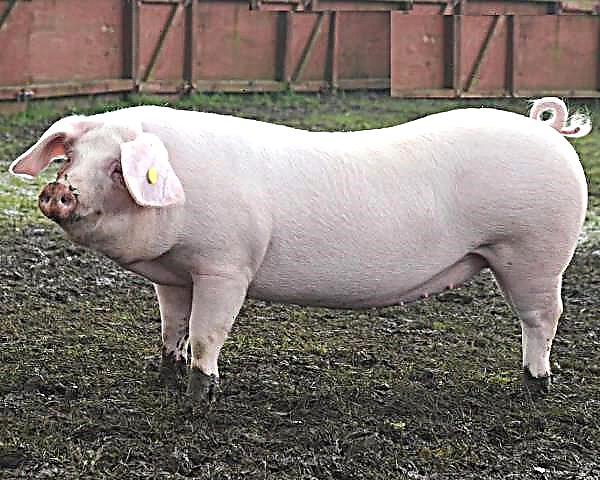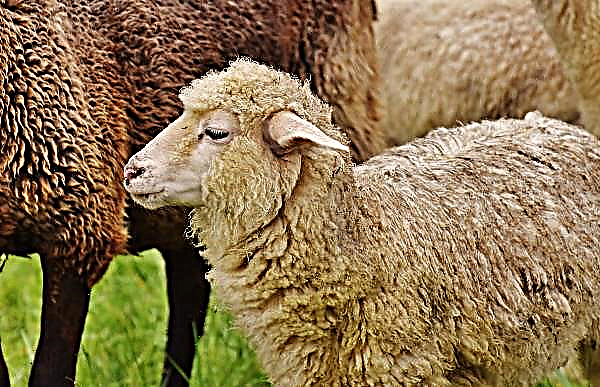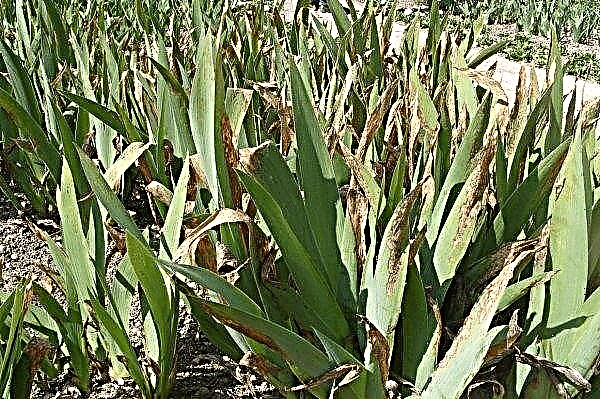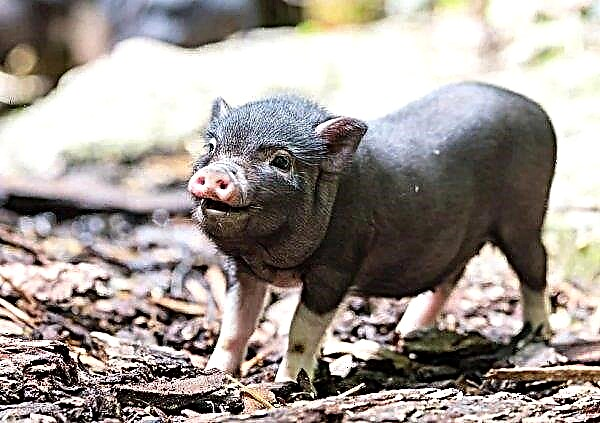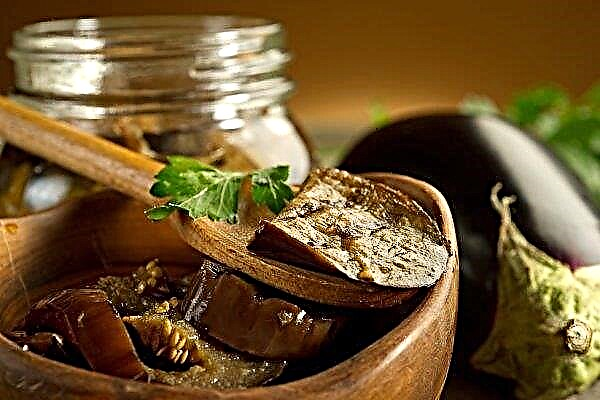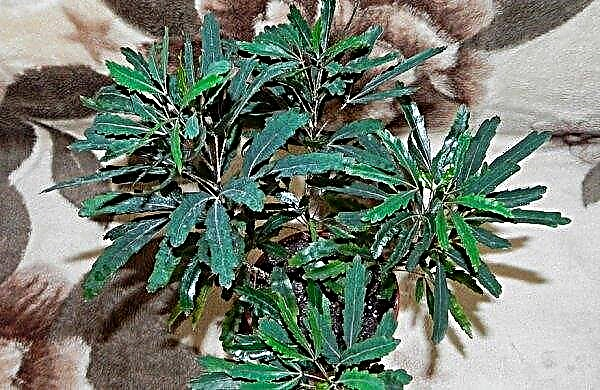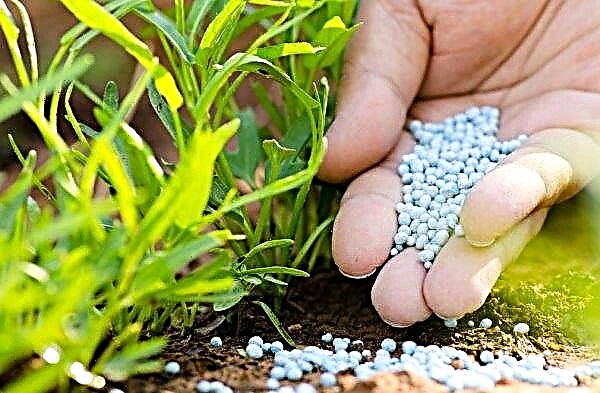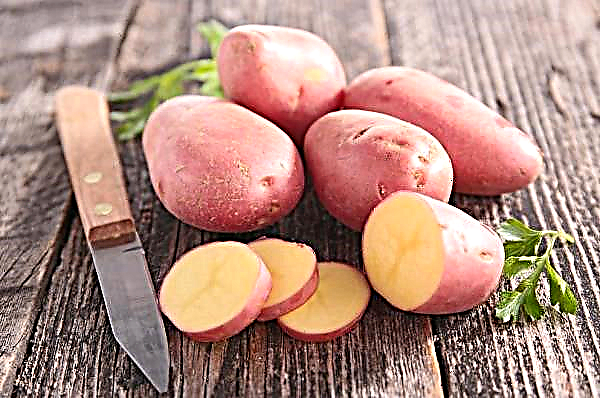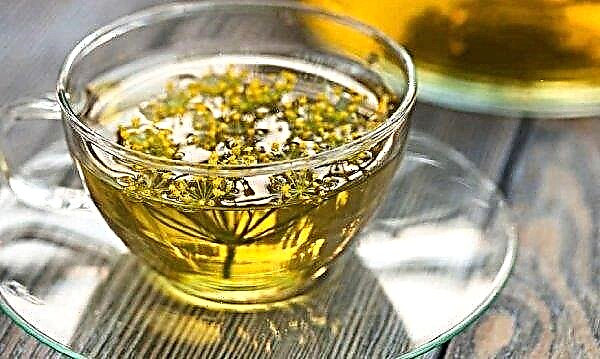Thuja - one of the most beautiful representatives of the class of conifers, is able to decorate any garden plot with its appearance. It grows in the form of a bush or tree. Despite the stunning appearance, the thuja is quite unpretentious in care, which makes it a very popular plant for many gardeners.
Conditions for the growth of thuja
Thuja is undemanding in care, however, on fairly moist and fertilized substrates, this shrub grows better.
If you grow thuja on sparse soil, it threatens her with such consequences:
- the color of the needles dims and it becomes pale;
- over time, the crown acquires a brown tint;
- needles may crumble;
- the shrub below begins to go bald;
- plants with weak immunity are susceptible to fungal diseases, as a result of which needles and shoots die.

Tui are of the western and eastern type. For the first, sufficiently moistened fertile, slightly acidic substrates with a pH of 5.0–7.0 are good. For the cultivation of shrubs of the eastern type, not so fertile soils are suitable, but it is better that they are more alkaline, quite warm and with good moisture permeability.
Important! There is a persistent stereotype that the soil around the thuja should be acidified without fail. In fact, this is not so: they increase the acidity of the soil only where western-type shrubs grow.
Place for landing should choose a sunny, well-lit, or in extreme cases partial partial shade. If shaded areas prevail on your site, opt for varieties that normally grow under conditions of partial shade.
 It is best to plant a tree in places protected from the wind. Like all conifers, the roots of the plant are of a superficial type, strong winds for the green beauty are destructive.
It is best to plant a tree in places protected from the wind. Like all conifers, the roots of the plant are of a superficial type, strong winds for the green beauty are destructive.
Cultivation methods
There are two ways to breed thuja - generative and vegetative. For breeding species trees and shrubs, a generative (seed) method is suitable. For varietal propagation, you should resort to the vegetative method, since the thuja grown from seeds does not inherit parental traits.
From seed
To grow a tree or shrub in this way, you have to be patient, because for this you will need 3-5 years. Seeds are harvested fresh, of the current season.
The seeds sown in the fall during the winter are naturally stratified. You can perform an artificial stratification procedure by holding the seeds in the refrigerator for 30–35 days at 0 ... + 4 ° C. This event helps to improve germination.First you need to collect the seeds. Cones reach the necessary conditions, depending on the region and variety, from the second decade of September to almost November. If you plan to collect planting material, carefully observe the plant during the indicated period. The fact is that after ripening, the cones open within 1-1.5 weeks, and the seeds fly apart.

The ripened cones are torn off, seeds are knocked out of them and prepared for storage and subsequent planting:
- The husks are removed from the seeds. The yield of finished planting material is 4-10%.
- Remove the wings.
- Seeds are placed in water at night, those that remain on the surface in the morning are empty, they are thrown away.
- Sorted, sorted by size, packed in containers with air access or in paper bags.
Then you should take care of where to plant the seeds. The soil in the selected place should be carefully weeded, removing all weeds and organic residues, breaking large clods.
Did you know? Thuya is considered to be the homeland of North America, more precisely - the border regions of the United States and Canada. Currently, five main plant species are known: thuja Korean, western, giant, Japanese and Sichuan.
The direct procedure for planting prepared seeds and caring for them is as follows:
- In the place chosen for growing seeds, make strip-beds. In soft loose soil, you can make them with a stick or finger. Sowing depth - 0.5 cm, this will be enough. The norm of density of crops is approximately 1.5 g of seeds per 1 m². You can start growing thuja in boxes with prepared soil.
- The beds or containers with planted seeds are covered with a thin layer of sawdust and lightly sprinkled with a substrate.
- Watering the plantings is necessary with such a frequency that the soil is always slightly moistened.
- When the plants reach a height of 5 cm, they are dived and planted so that the distance between adjacent trees is about 10 cm.
- Two years later, if you did everything right, your shrubs will grow to almost half a meter. Then they need to be transplanted to the place where they will grow. If you want to create a hedge from trees, when planting, maintain a distance of 0.6-0.7 m between plants.

Propagation by cuttings
For seedling propagation, lignified shoots of 25–40 cm long plants 2-3 years old are used. Cut them off at the very beginning of summer. You can use the shoots of the current season, just starting to wood, 10–20 cm long. Cuttings should not be cut off, but broken off together with the heel.
Further, the procedure is as follows:
- The connection point of the handle with the mother branch should be treated with a solution of a growth stimulant (“Heteroauxin”, succinic acid, humins, “Epin”, etc.).
- Cuttings need to be planted in a pre-prepared bed, the substrate of which consists of equal parts of humus, river sand and peat. This soil mixture should be shed with boiling water with a solution of potassium permanganate (3%), dried, and then plant the cuttings.
- After planting, the garden bed is covered with garden foil to create the desired microclimate.
- Further care of seedlings consists mainly of proper hydration. Plant seedlings like well-moistened air, but not too damp soil. To do this, periodically open the film and spray the seedlings using a spray gun.
- After the petioles take root, the film is periodically removed. First, the plants are kept open for 10-15 minutes. Gradually, the length of stay of young shoots in the fresh air is increased until the film has to be removed altogether. Such aeration promotes hardening of plants and better adaptation to environmental conditions.
- When autumn colds come, young plants will need to be mulched. It is best to use a mixture of dry leaves, sawdust and peat in equal parts. By the time the temperature drops below 0 ° C, plantings are covered with spruce branches. If frost reaches -5 ...- 7 ° C, plants should be insulated with garden foil.

Transfer to a permanent place
Usually trees and shrubs of two years old are transplanted to a permanent place. This procedure is quite simple, you just need to know how to perform it correctly.
Transplanted conifers as follows:
- The bark of the plant on the south side is marked with chalk. Within a radius of 0.4–0.5 m from the tree trunk, to the depth of the bayonet, the shovels dig a trench in a circle. The soil selected during digging is not removed; it will be needed for transplanting to the final place.
- Using a shovel as a lever, they poke up an array of soil with a tree or shrub in the center, trying to tear it off with the least loss of substrate from the roots.
- A plant pulled out of the ground with a large root lump of earth should be loaded onto a wheelbarrow and transported to a new place. There should already be a prepared pit. Its bottom must be fertilized with humus in advance and shed with universal fertilizers for conifers. The bottom of the pit 0.6-0.7 m deep and 1 m in diameter is covered with a drainage layer (expanded clay or a mixture of sand with crushed stone and broken tiles).
- A layer of soil mixture (land taken from the same place with mineral fertilizers) 10–15 cm thick is poured on top of the drainage.
- A plant with a lump of soil is placed in a pit, orienting it along the south side (a mark made with chalk will help when digging it out). All the free space of the pit is sprinkled with earth taken from the former place of growth of the bush. The thuja is installed in the pit so that the root neck is 3-5 cm above the ground. After planting, the tree is abundantly watered with warm water.

The transshipment method described above is suitable for young plants. With more mature conifers, one needs to act a little differently. They dig a bush a year before transplanting, and dig a deeper trench - a minimum of one bayonet. During the season, inside the circle, the roots grow and intertwine, thereby preventing the root coma from decaying during transportation.
Follow-up care
Caring for a thuja is quite simple, the main thing is to know what and when to do. The main components of care are also traditional: watering, top dressing, prevention of diseases and pests, preparation for winter. Perhaps cropping and shaping the crown stand out. The plant is cultivated as an ornamental, that is, its main purpose is to decorate with its appearance a personal plot, flowerbed, use as a hedge. Accordingly, the appearance of this tree should be given special attention.
Did you know? The smell of arborvitae is used by some manufacturers of elite brands of shoes to flavor their products. This fragrance echoes the same notes in perfumery compositions by brands such as Hugo Boss and Safari Ralph Lauren.
Watering and fertilizer
After the final landing at the destination, thuja is abundantly watered - 1–5 buckets weekly, depending on how large the plant is. For a young tree, the most acceptable watering option is sprinkling with a little warm, settled water. In this case, the soil around the shrub and its roots are saturated with moisture. Water washes away dirt from the needles, which contributes to better tissue respiration of the thuja, and it grows faster.
Water washes away dirt from the needles, which contributes to better tissue respiration of the thuja, and it grows faster.
Due to the fact that the location of the roots of conifers is superficial, and the thuja is no exception, the near-trunk area should be loosened shallow, up to 8 cm. But this should be done regularly, after each watering, otherwise the soil will be taken up with a crust that will interfere with root breathing.
The loosened soil around the tree is mulched with pine bark and peat. This measure prevents the evaporation of moisture, and in winter - freezing of the soil. Abundantly water the plant should be just before the onset of frost and with the advent of the first thaw. In addition, thaw is watered in the case of winter thaws.
As for top dressing, they make them approximately according to this scheme:
- from April to the second decade of July - universal fertilizers for conifers according to the instructions. On average, do it weekly. A drug such as Kemira Universal (50 g / 1 m²) has proven itself well. Separate mineral dressings can be used, with emphasis on potassium, magnesium and phosphorus. Coniferous nitrogen in such quantity as deciduous is not needed;
- from late July to late September - top dressing containing magnesium, potassium and phosphorus;
- if when transplanting the plant it was well fertilized, the next top dressing is carried out only after a year.
Video: how to fertilize thuja
Feeding is especially important on scarce soils in the early years of the thuja. During this period, it is extremely important that the tree not only takes root, but also grows strong and healthy, with a well-developed immune system. If in the first years of life a plant is properly and sufficiently fed, then even on poor soils the thuja will be able to develop normally, having a supply of useful substances.
In the event that the land on your summer cottage is not very good in order to grow thuja, mineral fertilizers are applied according to the following scheme:
- total annual mass of mineral fertilizing - 80–100 g / 1 m² of area;
- half is paid in spring, the rest at the beginning of July;
- for normal crown growth, the tree needs iron, magnesium, in September - potassium and phosphorus. The plant reacts especially sharply to a lack of magnesium, which becomes noticeable by the brown shade of the crown. In order for the needles to please the eye with their beautiful emerald color, it is necessary to introduce magnesium sulfate (1 tablespoon / 1 m²) into the soil once.

In autumn, for one plant, depending on the degree of soil fertility and tree growth, the following amount of potassium-phosphorus fertilizers is needed:
- a tree up to 1 m high - 5–20 g;
- above 1 m - 25–40 g.
It is more expedient to carry out autumn top dressing once - at the end of summer or the beginning of September. Once a year, you can feed thawed organics - well-rotted manure, poultry litter solution or compost. Eastern species of thuja should be periodically fed with ash - 2 cups dissolved in one bucket of water per 1 m².
Did you know? For a good reason, one can be called a long-lived tree. In the world you can find many representatives of the species about 1000 years old.
Disease prevention
Fungal diseases, such as brown shute, cytosporosis, fusariosis, pose the greatest threat to the plant. These diseases target young shoots and needles as their target. To destroy the fungus, Bordeaux fluid or the Kartotsid drug is used. Therapeutic measures are carried out, starting in March and until the plants are completely cured, with a periodicity of twice a month. In more detail about the signs of some diseases and methods of dealing with them below.
Fusarium The fungal disease most commonly affecting conifers. First, at the ends of the shoots you can see the dry yellowed parts on which spores of the mushroom appear rusty red.
 If primary signs of fusariosis are detected, all affected areas should be cut with an acute secateurs. The secateurs should be disinfected after each pruning in a solution of potassium permanganate (3%), vitriol (6–8%), or with a Pharmaiod-type drug.
If primary signs of fusariosis are detected, all affected areas should be cut with an acute secateurs. The secateurs should be disinfected after each pruning in a solution of potassium permanganate (3%), vitriol (6–8%), or with a Pharmaiod-type drug.
After removing the diseased parts, the plant is treated with antifungal agents (Topsin M 500 SC). Neighboring trees should also be treated with the drug, even if there are no traces of the disease on them. Such a preventive measure would not be superfluous to prevent an outbreak of the disease in the entire garden or garden. After 7-15 days, the procedure is repeated to consolidate the result.
Spotting. The disease manifests itself in the summer in the form of yellow spots on the shoots and needles. The spots increase in time and merge, and the needles acquire a brown tint. Apply drugs "Abiga-Peak", "HOM" according to the instructions, after conducting sanitary pruning.
Gray mold. The main feature of rot is the difficulty in detecting it in the initial period of development. It clearly manifests itself when the plant is already seriously affected by the disease. First, watery spots appear on the branches, then they turn brown, and later a white coating forms. Unfortunately, to solve the problem, the most cardinal method is best suited - uproot the bush and burn it away from the site. Treat all neighboring trees and shrubs with fungicides.
Video: thuja disease
Root rot. At the initial stage of the disease, the scaly bark loses its typical color and turns yellow. Later, the crust cracks, starting from the ground itself in the direction of the crown. To combat root rot, as well as gray mold, the most effective method is to remove the diseased plant, followed by the fungicide treatment of soil and plants nearby.
The reasons why fungal diseases occur are high temperatures (+22 ... + 26 ° C) and humidity. In order to avoid creating favorable conditions for the development of the fungus, do not overfill the plants during irrigation. Water for irrigation should be at a temperature of +20 ... + 25 ° С.
In addition, plantings should not be too frequent, otherwise favorable conditions arise for the development of diseases.
Against most fungal diseases, such drugs are effective:
- "Topsin";
- Sarfun 500 SC;
- "Rovral FLO 255 SC."
The fungal diseases described above, although they cause troubles to plants and gardeners, they can still be combated, and with proper attention and implementation of preventive measures, and prevent them. But the disease, which will be discussed later, is a real threat to the planting of thuja.
Late blight. The detection of the first symptoms is complicated by the fact that the disease begins to affect parts of the bush at the very base. The diseased branch dries and dies, the fungus quickly spreads throughout the bush. As a result, the bark becomes rusty, the neck of the root rots, the thuja perishes.
A tree affected by late blight should be uprooted and burned outside the site, and all nearby plants and soil should be treated with something from the list:
- Aliette
- "Biosept";
- "Bravo 500 SK."

In addition, some insects have also chosen the thuja, among which false shields and aphids are especially persistent. You can learn about the fact that pests have settled on the plant by a characteristic feature - yellowed and crumbling needles. To control insects, “Karbofos”, “Rogor” or “Decis” are used before the buds open. About a week before the beginning of July, and again, after two weeks, they are treated with either Actellic or Chlorophos.
Trimming and Shaping
As mentioned above, due to the decorative nature of the thuja, its trimming and crown formation, special attention should be paid. For non-specialists, the need for this operation can cause a slight panic. However, you should not be afraid, the procedure cannot be called super complicated, the main thing is to know how to perform it.
The shrub loves pruning and accordingly responds to it. Frequent pruning of needles responds with increased splendor and density. You can trim the crown for most of the summer (until mid-August), but it is more advisable to do this in the early spring, before sap flow begins in the branches of the bush.Important! The first procedure is performed when the tree reaches the age of 2-3 years. To trim, you need a very well-honed pruning shears, in no case chewing a cut with a blunt tool is unacceptable.
If the main function of the thuja is to serve as a hedge, it should be cut at least twice a year, it is best to do this in the early spring and in the first ten days of August. And for a lonely growing shrub, and for a group of several thuja, sanitary and forming trimmings are carried out.
Form a crown should begin when the thuja reaches your desired size. For some varieties, one procedure performed in the spring is enough, for others, an additional procedure is needed - closer to the end of summer. The more often you trim, the better the crown will grow. However, do not get too carried away: in one operation, you should not delete more than 1/3 of the length of the branch.
Important! Thuja should not be trimmed in the second half of August. The fact is that the procedure stimulates the growth of young shoots that can suffer from frost.
Shelter for the winter
Until the thuja reaches the age of five, it should be sheltered for the winter. A simple and at the same time effective option is to use spruce branches. When it gets cold enough, before the first frosts the tree is spudded, and the trunk circle is mulched with a mixture of peat and sawdust.
Older plants usually do not cover for the winter, but it is necessary to mulch the earth near the trunk. In addition, in order to avoid damage to the tree’s crown, it is tied for the winter, collecting branches to the trunk tightly (but not excessively). At the end of winter, so that the bright sunshine does not burn needles, plants are covered with spunbond fiber.
 If, due to temperature changes, the bark of the plant is cracked, the injured places are covered with garden varieties, and the bark is carefully pulled together. So the wounds of the tree heal faster.
If, due to temperature changes, the bark of the plant is cracked, the injured places are covered with garden varieties, and the bark is carefully pulled together. So the wounds of the tree heal faster.
Tips & Tricks
Some of the following tips and tricks will help you grow a healthy and beautiful thaw in the country:
- Thuja seedlings should be selected in a nearby nursery. Since the trees were grown in the same climatic conditions, it will be easier for them to adapt to the new environment;
- choose the variety that is most suitable for your specific conditions (soil acidity, degree of shaded area);
- thuja loves plentiful and frequent watering, however, excessive waterlogging can cause the development of the fungus. So, do not be too lazy to equip normal drainage and do not flood the tree;
- if, during the onset of frost, the needles become rusty for no apparent reason, one should not worry - the tree is simply preparing for winter;
- try not to admit dogs to the thuja, as they have a habit of urinating on the plant, as a result of which the needles become rusty;
- the reason that the tree began to wither may be the use of too concentrated a preparation for top dressing. Follow the recommendations during the preparation of the solution, as well as the safety requirements when working with toxic substances.

Thuja is perhaps one of the best plants for landscaping a personal plot, as an element of landscape design of streets and sidewalks. The tree combines a beautiful appearance and fairly moderate care requirements that even a novice gardener will cope with.


